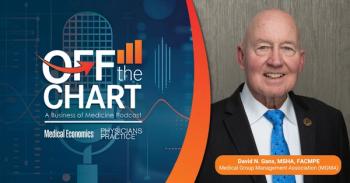
Making Public Health Policy and Economics a Priority
Public health as an important part of an allopathic, clinical program may be intuitive to some, but implementing it is still a challenge.
Beginning with the 2012 academic year, Eastern Virginia Medical School - where I have a faculty appointment - was awarded a federal grant to incorporate public health training into the classic categorically pediatric residency training.
This validation - that public health training can be an important part of an allopathic, clinical program - may seem intuitive to some. But the actual implementation remains quite challenging.
Foremost, there are logistics that must be negotiated. These days, everyone reading this blog will likely be familiar with the increasingly strict work-hours limitations, which currently mandate a maximum 80-hour workweek (likely to be shortened even further in the future) and limit interns to 16-hour shifts.
How, then, does a public health curriculum get prioritized? The intention is that by the end of a three-year residency program, graduates have obtained the near equivalent of 12 credit hours that could be transferred, if desired, to some public health programs. Can a lecture on health equality be as vital as a mock code, a talk on anemia, or a lecture on toxic ingestions?
I recently taught the course on Public Health Policy and Economics, which was sandwiched between the Introduction to Public Health and Health Disparities courses. I was given an hour a week to speak directly to residents at lunchtime.
In comparison, when discussing this with a colleague at another institution, he marveled at the commitment. He explained the difficulty at giving any one division a guaranteed lecture per month, even on clinical issues, let alone a once-a-week public health commitment. His incredulity was palpable.
Some of the strategy I use, then, is to make the talks as pertinent - and clinically relevant - as possible. It meant revamping some of my canned talks and designing them specifically for my audience du jour. It also meant working with my public health-trained colleagues and offering them guidance on how to talk to tired, busy, often disinterested residents, because passions on the importance of global health metrics or the broad implications of socioeconomic disparities do not easily translate.
In particular:
1. Try to limit talks to 35-40 minutes. It's doable, no matter how broad the topic.
2. Use very specific titles to draw in listeners. Such as: “Clinical Application of Medicaid for the Virginia Pediatrician.”
3. Incorporate vignettes with a clinical slant, best stated as, “A three-year old patient with a managed care Medicaid product presented with cellulitis…”
4. Multimedia -good.
5. PowerPoint - bad. A 35-40 minute talk can be delivered with a maximum of 10 slides, easy.
It is important to remember that administrative and economic issues are not high priority to residents, not because they don’t consider them important but more likely because they are so insulated from the practical value. Just as someone might be tough to engage on a highly technical talk on endoscopic supraglottoplasty if she is never going to do an edoscopic supraglottoplasty, so too may the implications of EPSDT, or the nuance of federally-funded community health centers, or the challenges with Head Start, seem foreign.
In fact, these challenges are similar with all physicians, not just residents. And why I write this blog, and speak at Grand Rounds, and try to engage my pediatric hospitalist colleagues on listservs and national conferences.
In this changing landscape, you have to know this information. We have to work to seamlessly integrate such knowledge into training. That's part of my goal here.
Find out more about Bryan Fine and our other
Newsletter
Optimize your practice with the Physicians Practice newsletter, offering management pearls, leadership tips, and business strategies tailored for practice administrators and physicians of any specialty.









